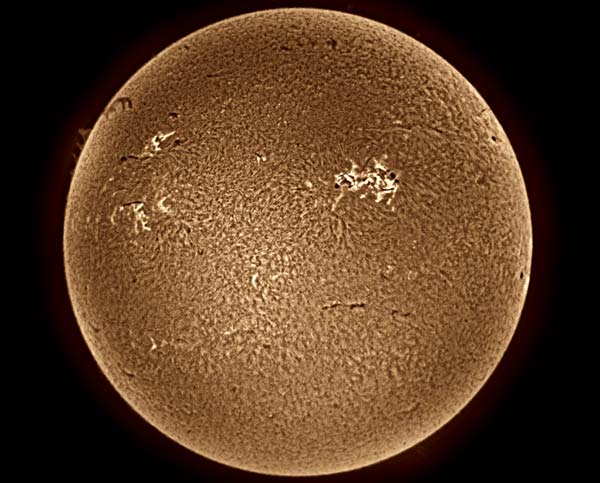Laws of Form: An Opinion
But after this rereading I think I'm now ready for the final verdict: is this a crackpot book or not?
Well - in the first few chapters it develops a kind of boolean algebra using 'forms' built out of Spencer-Brown's 'distinction' symbol. It's cute because he's constructing an algebra that has just the one symbol. Everything he has to say here seems more or less fine.
In the following chapters variables are introduced. It gets a little confusing. At first the variables are metavariables in the sense that they are used by Spencer-Brown to represent his forms. But later on he introduces variables within his system at which point we have something equivalent to propositional calculus. The earlier boolean style algebra can now be interpreted as a model for this calculus. But it's all very confusing because he doesn't make it clear when an expression is to interpreted in the algebra or the calculus. Nonetheless, he then proceeds to prove the kinds of theorems you'd expect a logician to prove, viz. soundness and completeness.
He then introduces imaginary values. This is the point at which I became lost in my first reading years ago. Interpreting the 'distinction' as boolean 'not', he's introducing a logical value that is a solution to x = not x. Clearly neither x=true nor x=false do the job so Spencer-Brown claims to introduce imaginary values that are solutions. It seems like a lot of nonsense, but in my second reading of the book it made perfect sense. I don't think that he says enough to completely disambiguate the meaning but I was able to provide an interpretation, in Haskell, that fits his description. Quite simply, the logical values in Spencer-Brown's system need to be interpreted as streams of boolean values, ie. as type [Bool]. The distinction operator (call it cross) can now be defined as
cross :: [Bool] -> [Bool]
cross a = False : map not a
In other words, it's just a not with a delay. But there is a catch, the text talks vaguely about a delay, but not what the initial value of the stream should be. So I actually define cross by
cross :: Bool -> [Bool] -> [Bool]
cross init a = init : map not a
and provide my own values of init as required by the context.
So how do I know this is the correct interpretation? Well the book contains a counter circuit that is supposed to take logical signals as inputs and output a signal that flips value half as often as the input. I was able to take his circuit and transcribe it directly into Haskell (making some choices of init values) and amazingly it performed exactly as described. (This tool goes further than my code, but it still has to deal with the ambiguity issue.)
Here's the code:
(#) = zipWith (||)
cross a = False : map not a
i = cross i
m = True : m
n = False : n
delay n x = replicate n False ++ x
pulse m = replicate m True ++ n
b0 = i
b1 = [False,False,True,True]++b1
b2 = [False,False,False,False,True,True,True,True]++b2
b n = replicate n False ++ map not (b n)
trace a = let b = take 120 a in
let t x = if x then "-" else " " in
putStr $ unlines [b >>= t,b >>= (t.not)]
gate a b = let f = cross (cross (f # a) # b) in f
nor init x y = init : map not (x # y)
count a = let b = nor False a f
c = nor True b d
d = nor False b j
e = nor False a h
g = nor False e j
h = nor False f c
j = nor True d e
f = nor True g h
in f
test = count $ map not $ (b 4)
main = do
trace (map not (b 4))
trace test
a # b means a written next to b. cross a means a inside a distinction or crossing. Instead of building the circuit using cross I use nor, corresponding to the shorthand GSB uses. The definition of count is neat. It's a mutualy recursive definition that essentially allows me to label various points in the circuit and wire them up. It's really amazing that Haskell allows you do do this. Anyway, run main and it'll draw the two 'oscilloscope' traces. (You'll need a w-i-d-e terminal window.) There's a brief discussion of the circuit here.
So, Laws of Form succeeds in defining a boolean style algebra and propositional style calculus. It then shows how to build circuits using logic gates. And that, as far as I can see, is the complete content of the book. It's fun, it works, but it's not very profound and I don't think that even in its day it could have been terribly original. (Who first proved NAND and NOT gates are universal? Sheffer? Peirce?) In my view this makes GSB's mathematics not of the crackpot variety, despite his talk of imaginary logical values.
But...GSB's style is classic crackpot stuff. His writing borrows more from the Tao Te Ching than from conventional mathematics texts. He uses delberately obfuscated language and makes pronouncements that read like the writings of mystics. It's no surprise that when there was a conference on GSB's work it took place at Esalen.
So my final opinion, for all of the two cents that it's worth, is that GSB is a little on the crackpot side, but that his mathematics in Laws of Form is sound, fun, cute, but, despite the trappings, not terribly profound.
Labels: mathematics



